Yellow pickled radish is the cutest and crunchiest snack in Japan. With just 2 minutes prep time, make your own tasty takuan slices ready to pop into your homemade sushi rolls or eat after a big meal.
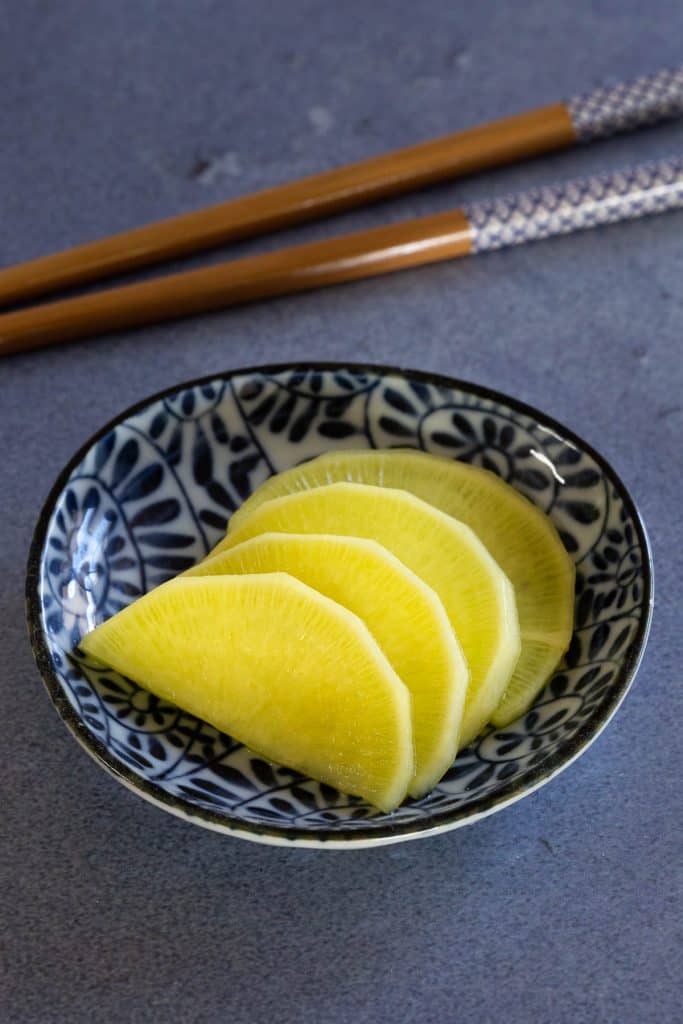
Why We Love This
The iconic crispy crunchy texture of these pickles gets us every time, and has to be one of our favourite elements of the cute side dish, aside from it’s flavour of course!
Being able to make this at home in a matter of minutes, while having it last for months in the fridge, makes this the perfect condiment to have on hand for Japanese dishes.
Related: Korean Pickled Garlic / Korean Pickled Onions / Vietnamese Pickled Carrots and Daikon
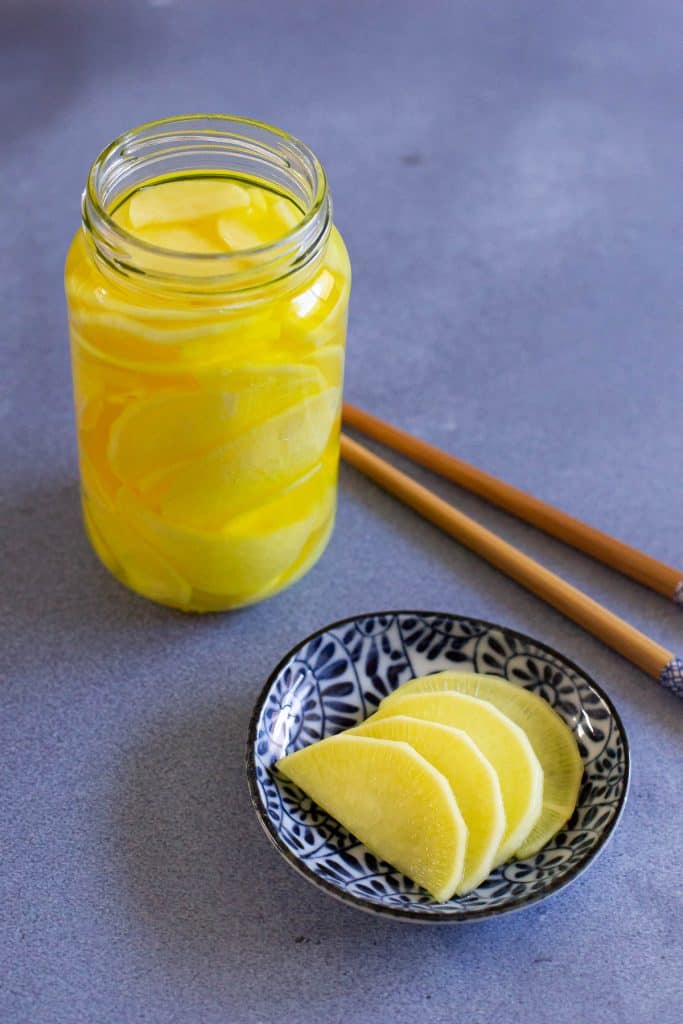
What are Yellow Pickled Radishes?
Sweet and tart slices of yellow pickled daikon, known as takuan in Japan and danmuji in Korea, are usually eaten on their own as a side or in dishes like sushi and kimbap. It cuts through spice nicely, or some people also eat a few slices after a main meal to aid in digestion. You can also top a few slices over plain rice, or as an added snack to a bento box.
It’s sometimes referred to as oshinko (pickle made with salt) but can also refer to other pickled vegetables like carrots, cucumbers and eggplant. Some variations include pickling the daikon in salt and rice bran, although we think using vinegar is a lot easier to find as the main pickling ingredient.
Credit for the recipe dates back to the late 1500’s, from a Japanese Zen Buddhist monk by the name of Takuan Soho – where the dish now takes it’s name.
Where We Discovered This Recipe
We first saw takuan in slices of fresh sushi (called shinkomaki), whizzing around on a conveyer belt at a restaurant in Osaka. We were immediately intrigued by glowing yellow strips and just had to try it! Chatting with our Osaka mum, Rieko, she mentioned she loves to have a few slices with a cup of tea. We’ll have to try that next!
What You’ll Need
No need to buy store bought, pickling your own takuan couldn’t be easier! Only 5 ingredients and a few minutes prep, and you’ll have these pickling away in your fridge.
- Daikon – Daikon is long white radish, which is super popular in Asian cuisines – especially in Japanese, Korean and Chinese.
- Vinegar – We used regular white vinegar for this, but you can sub this with white wine vinegar or rice wine vinegar if you prefer.
- Sugar – White sugar is fine, or for a deeper flavour you can try using brown sugar or palm sugar.
- Yellow Food Dye – This is to give the radish it’s distinct bright yellow colour. If you don’t like food dye, use a tsp of turmeric instead or leave it out completely.
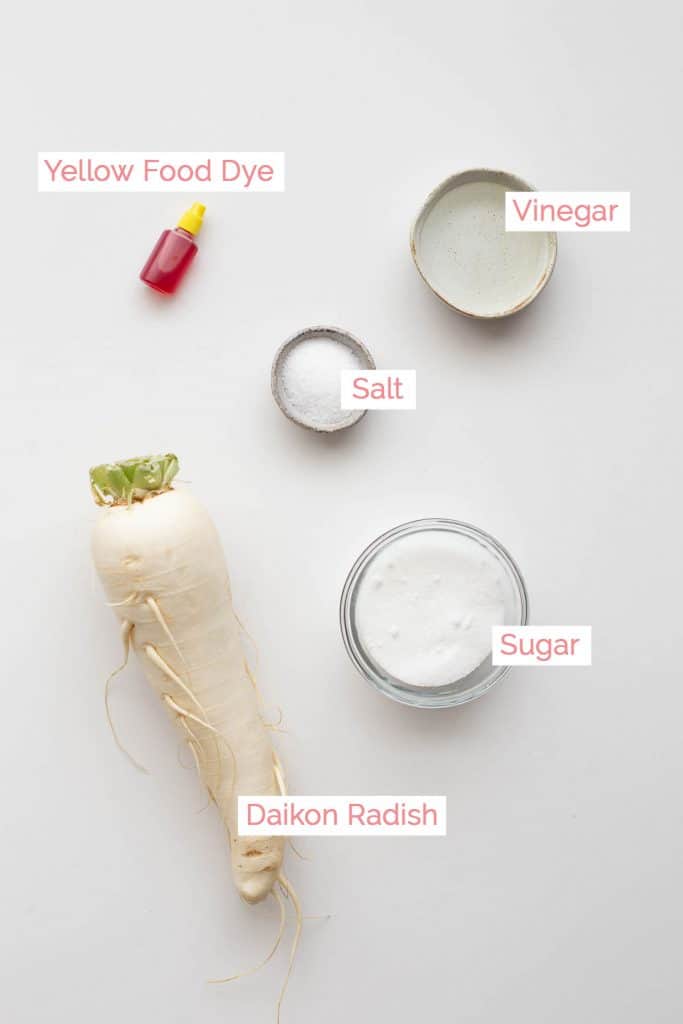
How to make Recipe:
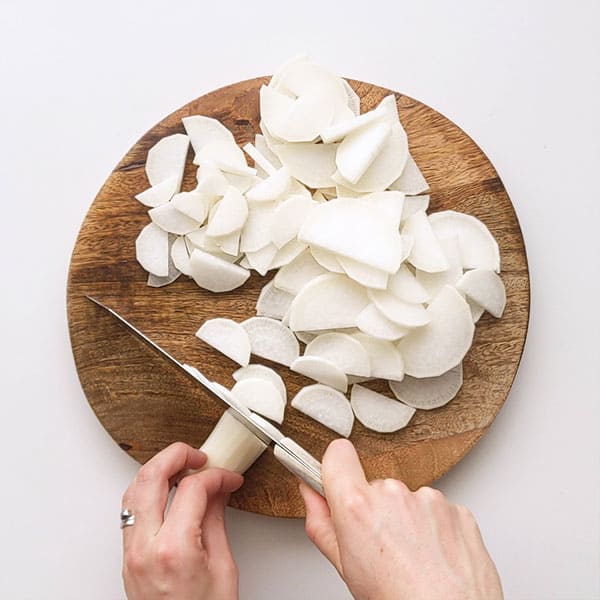
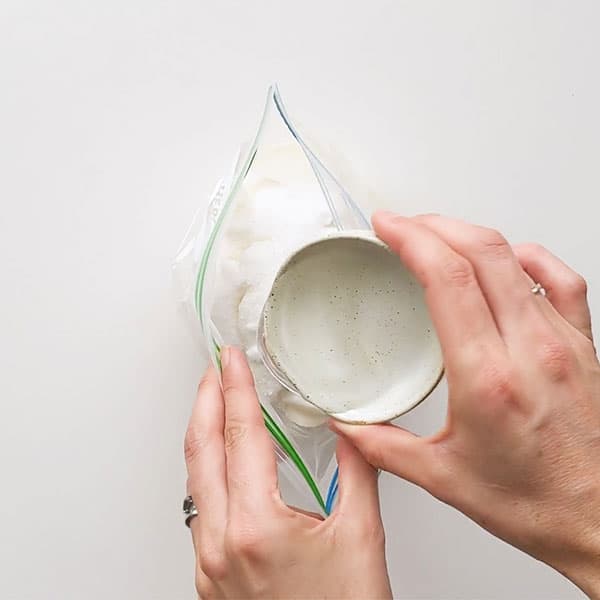
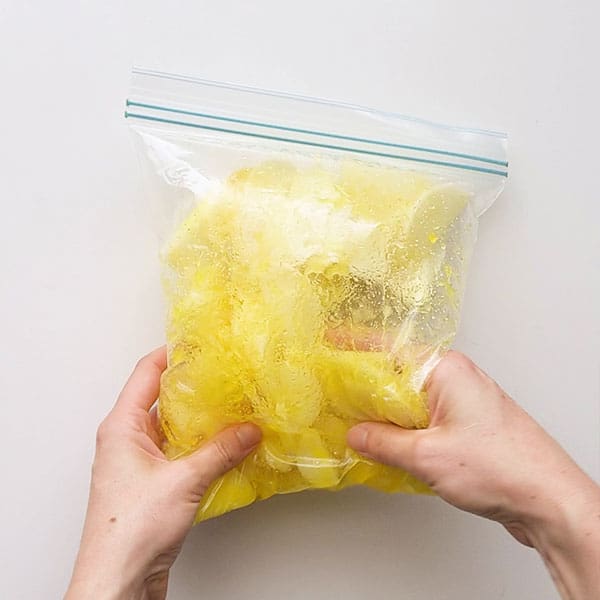
- Peel the daikon, removing both ends and cut down the centre. Slice into half moons.
- Place them all in a large ziplock bag. Add sugar, salt, vinegar and yellow food dye.
- Seal the bag and massage for a few minutes until the daikon is evenly coated.
- Wrap up and place in an airtight container in the fridge (to reduce smell). Pickles will be ready in 24 hours minimum and the flavour will only get better each day after.
Wandercook’s Tips
- Leave Space – It’s important to have extra space in your bag, container or jar as your daikon radish will release a lot of water as it pickles.
- Airtight Container – Similar to durian, daikon radish can produce a potent smell when pickled, this is normal – just make sure to use an airtight container so you don’t stink out your fridge or kitchen!
- Thick or Thin – Slice the radish thick or thin. For thin slices, it will pickle quicker, and for thick slices you’ll have a crunchier result but it will need longer (ie a few days) to pickle.
FAQs
Daikon is from the cabbage family, so once sliced and pickled, it will give off an odour similar to rotten egg, sulphur and fart! This is why we strongly recommend storing in an airtight container. The pickled radish won’t taste like it smells though, and is only obvious when you first open the container.
These pickles are best kept in the fridge, and we don’t recommend freezing them. They have a long shelf life, so this shouldn’t be an issue.
We recommend eating your takuan within 1-3 months, while it’s still nice and crunchy and keeps the best flavour.
Takuan is a common ingredient in sushi, but works great in a homemade bento box too. Try it alongside freshly cooked rice or an onigiri rice ball, Japanese potato salad and kinpira gobo stir fry. It’s common in Japan to enjoy takuan alongside a serve of agedashi tofu and miso soup as a delicious lunch set.
Variations & Substitutes
- Eggplant – If you like the taste, try it with eggplant, and just omit the yellow food dye.
- Radishes – If you can’t find daikon, feel free to substitute with red radish or watermelon radish.
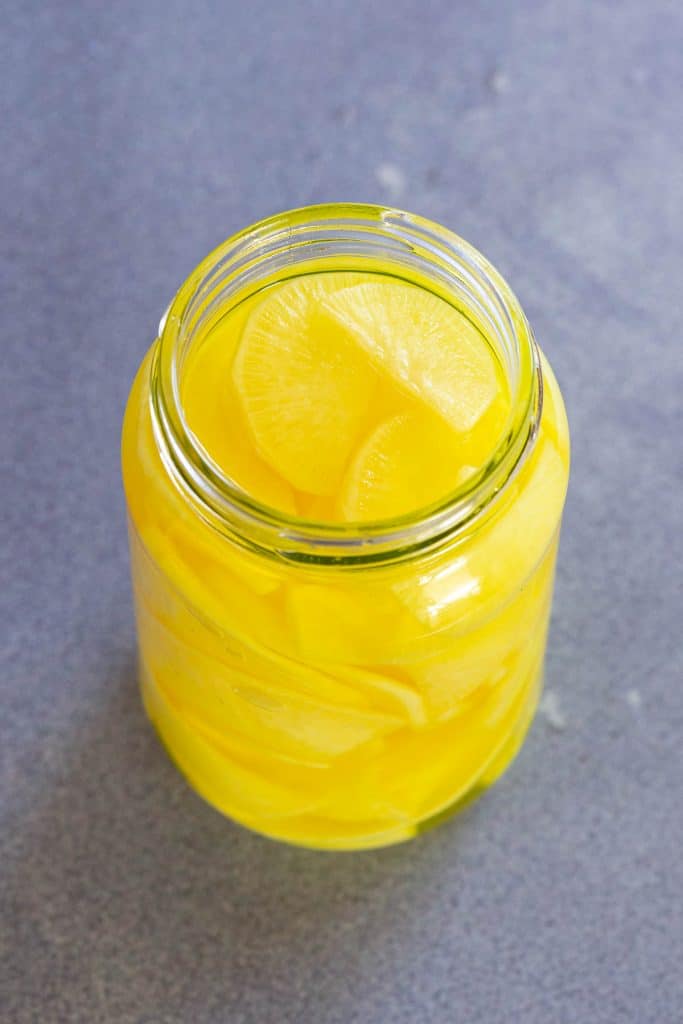
Easy Japanese recipes you can make at home:
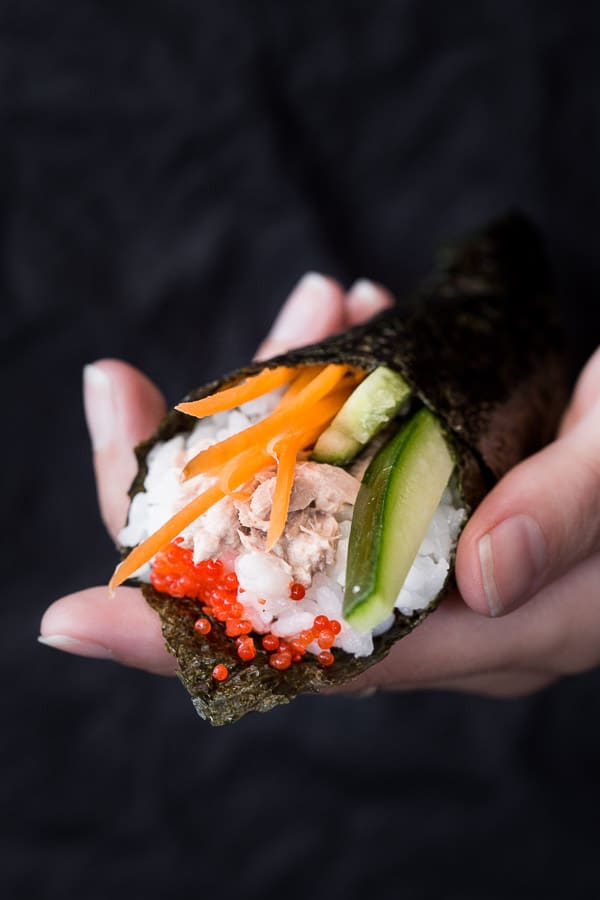

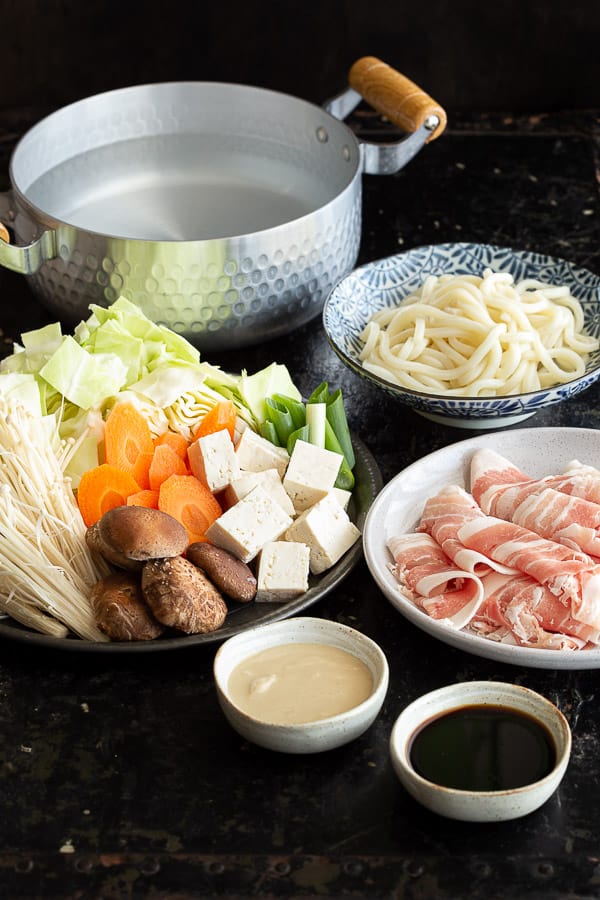
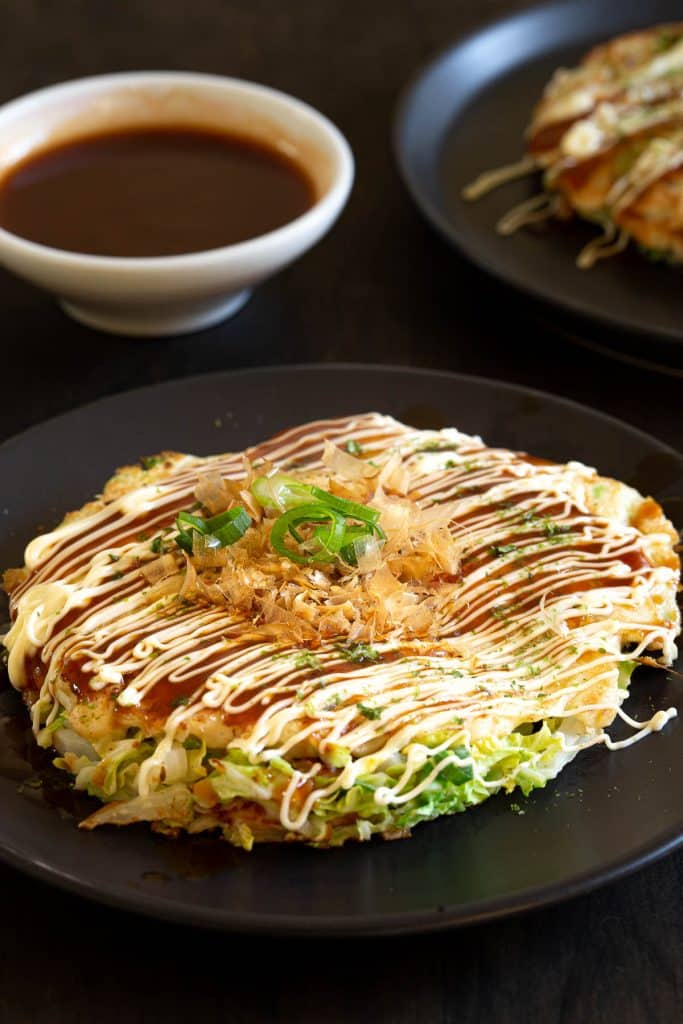
★ Did you make this recipe? Please leave a comment and star rating below!
Equipment
Ingredients
- 500 g daikon radish Japanese Radish
- 100 g sugar ½ cup
- 20 g salt 1 tbsp
- 20 ml vinegar 1 tbsp
- 6 drops yellow food dye or 1 tsp tumeric powder
Instructions
- Peel the daikon, removing both ends and cut down the centre. Slice into half moons.500 g daikon radish
- Place them all in a large ziplock bag. Add sugar, salt, vinegar and yellow food dye (or tumeric).100 g sugar, 20 g salt, 20 ml vinegar, 6 drops yellow food dye
- Seal the bag and massage for a few minutes until the daikon is evenly coated.
- Wrap up and place in an airtight container in the fridge (to reduce smell). Pickles will be ready in 24 hours minimum and the flavour will only get better each day after.
Video
Recipe Notes
- Leave space – It’s important to have extra space in your bag, container or jar as your daikon radish will release a lot of water as it pickles.
- Airtight container – Similar to durian, daikon radish can produce a potent smell when pickled, this is normal – just make sure to use an airtight container so you don’t stink out your fridge or kitchen!
- Thick or thin – Slice the radish thick or thin. For thin slices, it will pickle quicker, and for thick slices you’ll have a crunchier result but it will need longer (ie a few days) to pickle.
- Why does daikon radish smell? Daikon is from the cabbage family, so once sliced and pickled, it will give off an odour similar to rotten egg, sulphur and fart! This is why we strongly recommend storing in an airtight container. The pickled radish won’t taste like it smells though, and is only obvious when you first open the container.
- Can you freeze takuan? These pickles are best kept in the fridge, and we don’t recommend freezing them. They have a long shelf life, so this shouldn’t be an issue.
- How long does pickled daikon last? We recommend eating your takuan within 1-3 months, while it’s still nice and crunchy and keeps the best flavour.
Nutrition
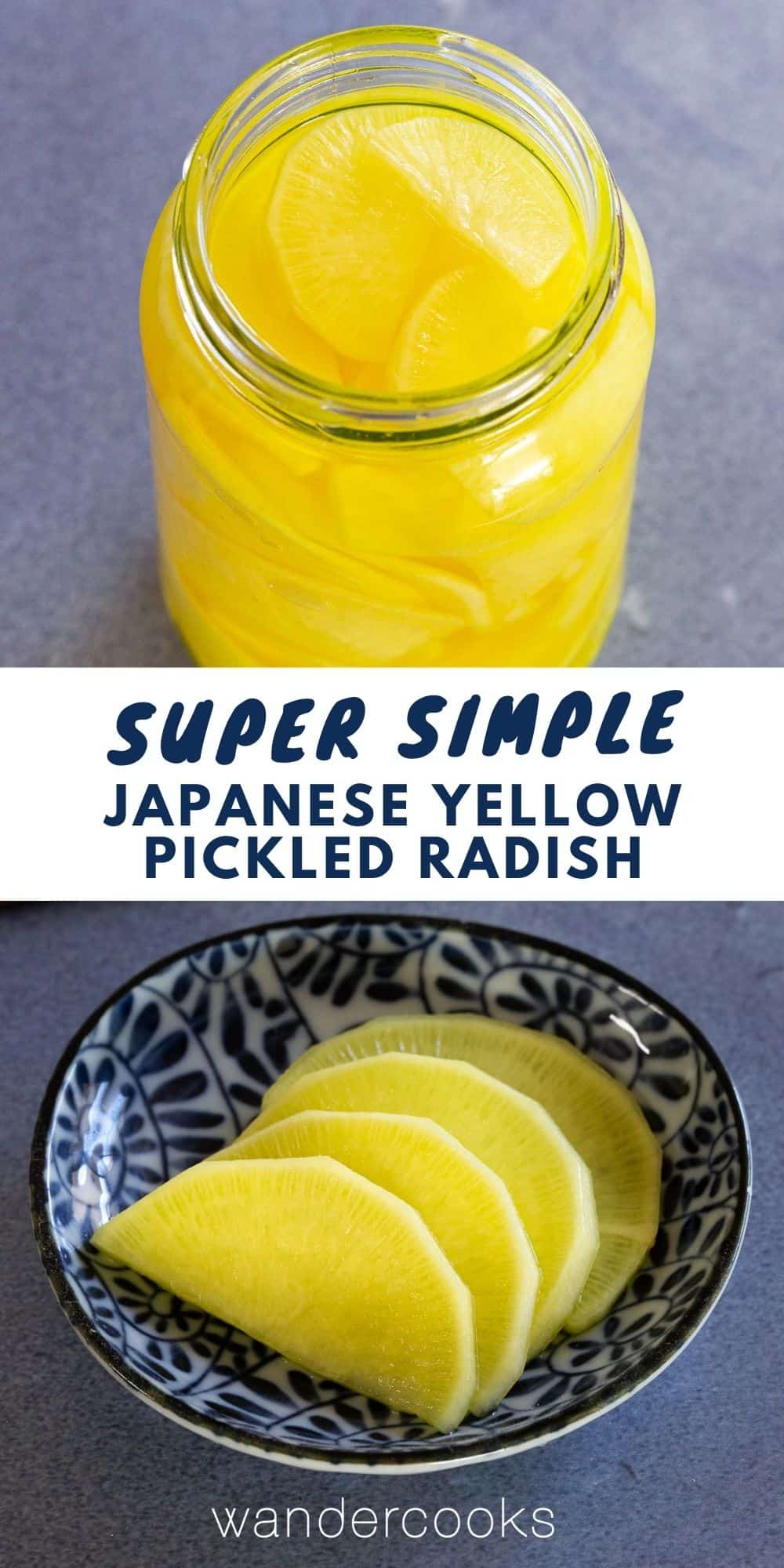

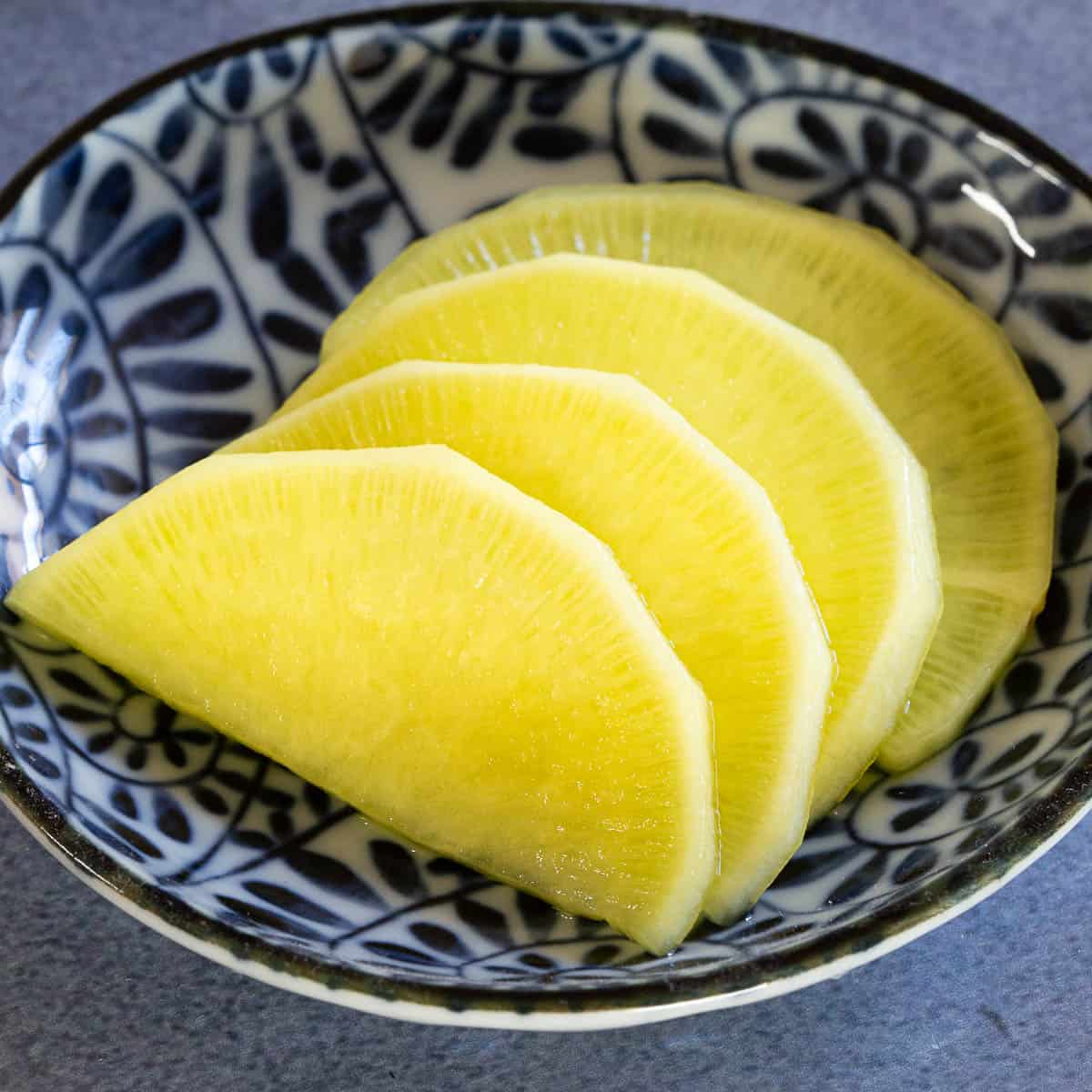


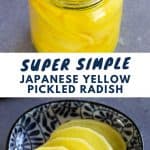
18 Comments
Nadine
19/01/2023 at 7:19 amCan I also use eggplant for this recipe ?
Wandercooks
20/01/2023 at 9:21 amHey Nadine, different vegetables require different amounts of ratios of ingredients due to their water content. So we don’t recommend swapping out the daikon for eggplant in this case.
Michelle
11/06/2022 at 2:49 amThank you for an easy recipe.
I love takuan on sushi even it is mainly eaten after or as a side dish during. Almost like pickled ginger to clean palette.
Now one thing please, and especially as comments lsud the idea:
it is not necessary to use or show a plastic single use zip lock bag. In this day and age we need to avoid, not promote throw out plastic when it is absolutely not needed as unfortunately many don’t think for themselves to adjust. Any reusable glass dish with lid or even bowl and a plate on top will do. Move it, stir it in there, or close and swirl it in there. It works fine. Just move it carefully or because of dye just hold lid well.
Thank you!
Wandercooks
11/06/2022 at 1:58 pmSo glad you enjoyed it. Great point about the zip lock bag – we re-use ours, but you’re right that it needs an update. We’ve scheduled it to be re-shot in one of our pickling jars. 🙂
Hazel
29/01/2022 at 8:12 amWould like to know with lots of liquids as I double recipe. Can I slice more daikon ??
Wandercooks
01/02/2022 at 10:10 amHey Hazel, it’s normal to have a lot of liquid come out of the daikon, I wouldn’t add more though as you need the right amount of vinegar ratios etc to the amount of daikon. The daikon also needs to be kept under the liquid for the freshest results and to avoid spoilage. 🙂
I had this
24/09/2021 at 4:49 pmThis is always on my dish, made my own pickled radish, ginger, onions etc. I love cooking Japanese and Korean dishes they’re deliciously healthy.
Wandercooks
29/09/2021 at 10:57 amAwesome! Agreed with those cuisines too, we cook them ALL the time at home. 🙂
Elise
21/09/2021 at 4:06 pmThis is really delicious and was great in homemade sushi! May I ask if the pickles need to be stored submerged in liquid? I haven’t got enough liquid to cover them in the jar. How long will they last like this?
Wandercooks
22/09/2021 at 4:56 pmSo glad you liked it Elise! It should be submerged if possible. You can always top up with a little extra vinegar if you need to make sure everything is covered. It’s best to use up within a week or two. 🙂
Teddy Baker
20/07/2021 at 3:58 amNot authentic at all; misses the pungent takuan fragrance. Give it a miss.
Wandercooks
20/07/2021 at 9:55 amHi Teddy, if you’re looking for the traditional recipe of sun drying daikon first then pickling in rice bran for months with added flavours, this is not the recipe for you. This is a quick at home and accessible recipe that uses vinegar instead, which we mentioned in the recipe.
Hazel bello
26/01/2022 at 3:27 amNormally I been using another recipe which I have my sauce boiled. But with this takuan, I was so impressed it came out very crispy n refreshing. Glad I got to making it n plus doing in a plastic bag. Very awesome
Wandercooks
27/01/2022 at 12:33 pmAh that’s amazing, thanks for letting us know! 😀
Marcia
04/04/2023 at 12:25 amTried this and the family loved it!
Ate it so fast.
Now I have excess liquid can I reuse to add to my next batch?
Wandercooks
05/04/2023 at 8:11 amAwesome work Marcia. We don’t recommend reusing the liquid unfortunately. There’s risk it can be contaminated and also it will throw out the levels required to extract the liquid out from the daikon itself. So best to start fresh with each batch!
Sandy
08/01/2023 at 7:48 amCan I keep leftover takuan sauce till I have more daikon to soak?
Wandercooks
09/01/2023 at 3:50 pmHey Sandy, while it is possible, we usually recommend starting fresh *just* in case.